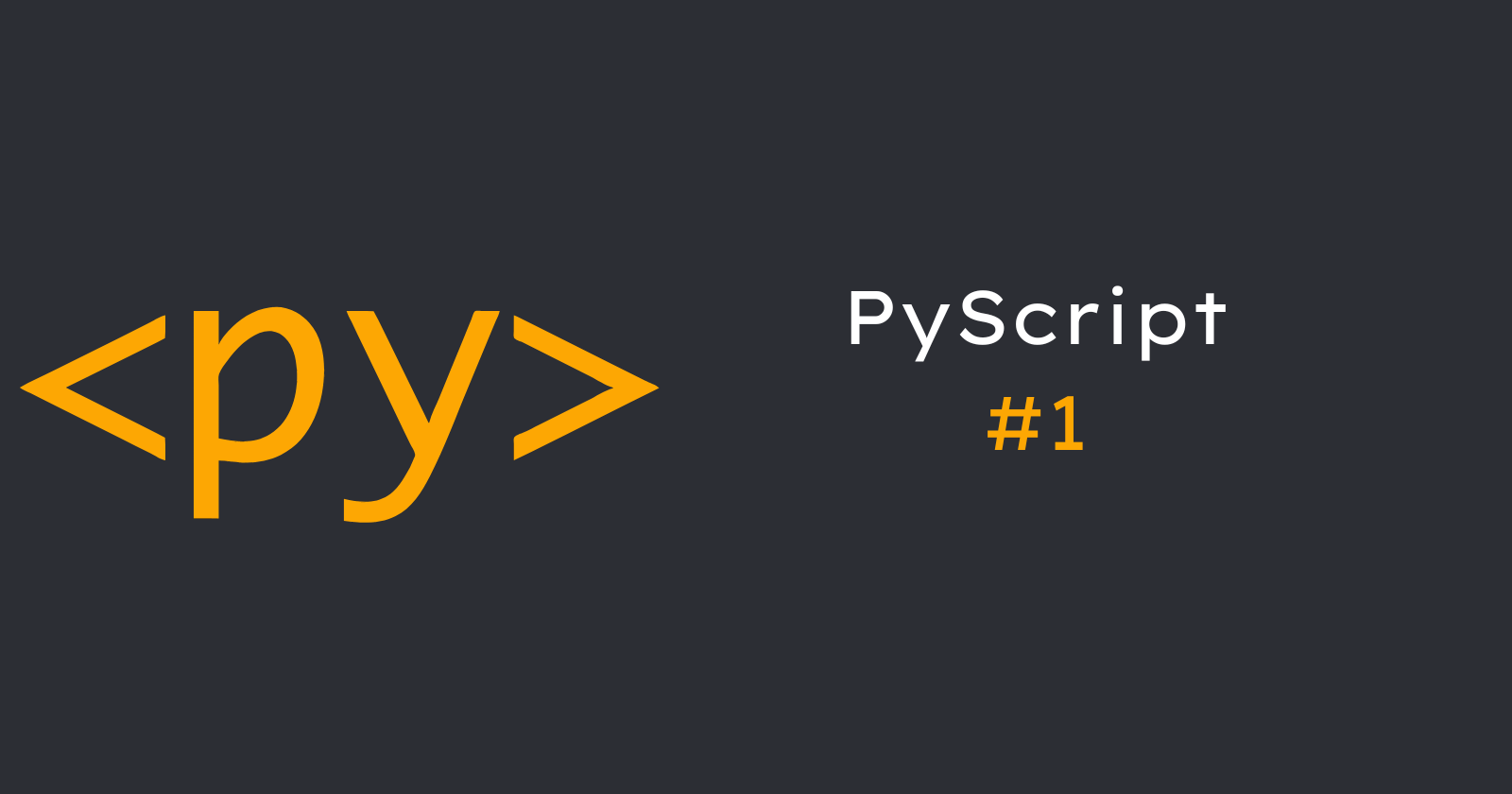PyScript: Introduction
 Sudhanshu Bhardwaj
Sudhanshu Bhardwaj
Welcome to the #1 article on PyScript, the Anaconda-Backed framework which I will be covering in a series of posts. This post in particular involves a common introduction to the PyScript environment and its usage and as we progress in the series, I will be explaining all the basic concepts through a project which we will code along the series.
Now for folks who are unfamiliar with the PyScript Framework, it is a new, underdevelopment python framework by Team Anaconda for web applications. This framework allows us to integrate python code into HTML using modern web technologies like WASM and Pyodide. The basic motto behind this framework is to expand the usage of Python in Web Application Sector. Now we already have massive python frameworks like Django but PyScript is want to boil down things for Python in the Front-end Sector as well. Now as mentioned earlier, it is still under development and might not work as efficiently, but with time, I believe things will change, we just need to wait.
Just to make things clear, PyScript is not a deep and complicated Framework; if you are familiar with basic python programming, it shall get you going with PyScript.
Key Features
- Large Community: We have a massive Python community in every sector of development, and the same goes with PyScript. Post-launch, PyScript saw a huge adoption in the development sector and in a matter of time, we shall clearly see the strength of the community.
- The Python Ecosystem Support: PyScript enables you to integrate various python libraries, including Pandas, NumPy and Matplotlib.
- Ease Of Use: Now what can be more easy than Just Basic Python everywhere? This clearly defines their aim of To Bring Programming for 99%.
Installation
There is not much installation required, not even a separate IDE. You just need to embed the following lines into your HTML code to get started:
<head>
<link rel="stylesheet" href="https://pyscript.net/alpha/pyscript.css" />
<script defer src="https://pyscript.net/alpha/pyscript.js"></script>
</head>
<body> <py-script> print('Hello, World!') </py-script> </body>
</html>
So that is it for this post. In the upcoming posts, we shall kick start some practical things with PyScript.
Now there are a bunch of introduction and examples of PyScript that you can check on PyScript's Official site.
Subscribe to my newsletter
Read articles from Sudhanshu Bhardwaj directly inside your inbox. Subscribe to the newsletter, and don't miss out.
Written by

Sudhanshu Bhardwaj
Sudhanshu Bhardwaj
!Life is beautiful